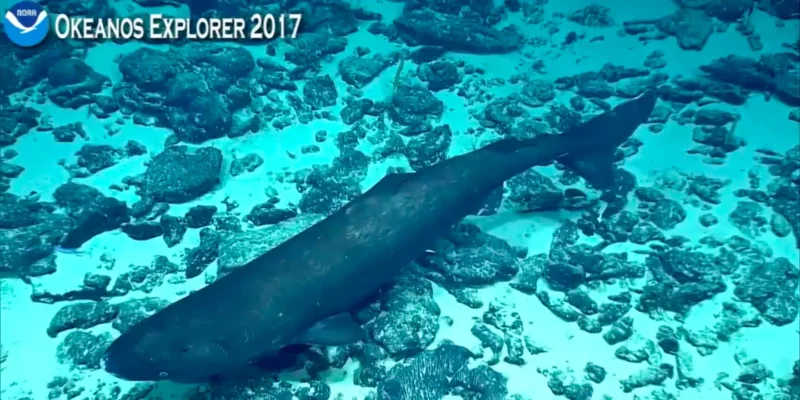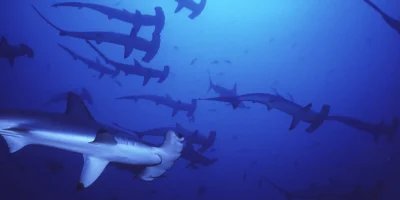As part of an observation experiment, researchers submerged a cow carcass in the South China Sea. At a depth of 1,629 meters, they documented for the first time eight Pacific sleeper sharks (family Somniosidae) feeding – an extraordinary glimpse into the behavior and distribution of these hard-to-observe deep-sea dwellers.
First record in the region
The footage was taken southeast of Hainan Island in the northern part of the South China Sea. According to lead researcher Han Tian, the discovery marks the first documented record of a Pacific sleeper shark in this region and suggests a southwestern expansion of its known distribution range.
"This result is the first recorded case of a Pacific sleeper shark in the South China Sea and suggests an expansion of its range to the southwest." — Han Tian
Check out our video!🥳Predating Behavior of the Pacific Sleeper Shark in the Deep Waters of South China Sea@OLARjournal https://t.co/eHcrIt9uwx pic.twitter.com/cWkqvDZ8kr
— Ocean-Land-Atmosphere Research (@OLARjournal) July 16, 2025
Hierarchies at the carcass
The video analysis revealed clear differences in feeding behavior: larger animals attacked the carcass directly and energetically, while smaller ones approached more cautiously. In addition, the sharks formed a kind of sequence that followed a hierarchical organization – similar to the patterns known from shark gatherings at drifting whale carcasses. The researchers also observed a separation by size and sex.
Accompanying fauna from the deep
In addition to the sharks, the team recorded other deep-sea organisms: among them copepods, which appeared on the sharks’ heads and on the cow carcass, as well as a snailfish and colorful amphipods. These findings provide a broader picture of the food web at great depths.
Why the discovery matters
Sleeper sharks have historically been documented mainly in the North Pacific – from Japan and the Bering Sea to Alaska and California. The newly obtained footage is among the first to show these sharks in the South China Sea. The discovery not only expands knowledge about their distribution but also raises questions about the ecological and environmental factors that drive movements and behavior in the deep.
"This discovery expands our understanding of their distribution and raises questions about environmental and ecological factors driving these changes." — Han Tian




